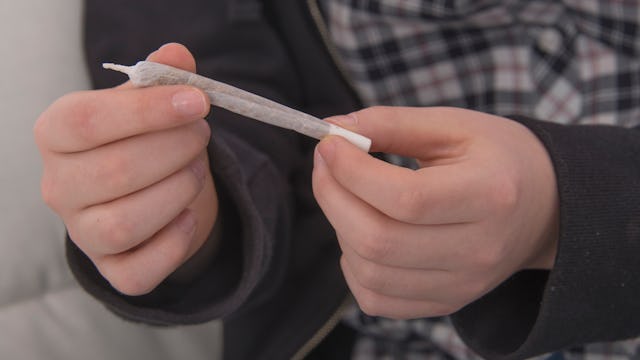Study Shows Legalizing Marijuana Makes Teens Use It Less Often

Legalizing marijuana had a surprising effect on pot use in teens: it mostly went down
As more and more states begin to legalize and/or decriminalize marijuana, some parents are worried about how the changes in law will affect drug use among high school students and other teens. But a new study out of Washington State, where marijuana was legalized in 2014, shows that most kids smoke weed less often than before the law changed.
The teen marijuana use study, which was published in the latest issue of the Journal of Adolescent Health, focused not only on pot use before and after legalization, but also on whether teens who worked outside of their home smoked more than those who didn’t.
It found that both eighth graders and tenth graders smoked less weed after marijuana was made legal in 2014, and only high school seniors who worked more than 11 hours per week smoked more now than they did when weed was illegal. Generally, kids who worked smoked more marijuana.
Specifically, 4.8 percent of non-working eighth graders reported using pot within the last month in 2016, while 20.8 percent of those who worked did. Among tenth graders, 13.9 percent reported using marijuana within the last 30 days post-legalization, compared to 33.2 percent of 10th graders who worked 11 or more hours per week.
Use of marijuana among non-working 8th graders fell from 7.5 to 4.8 percent between 2010 and 2016, and from 26.3 to 20.8 percent for working 8th graders.
Use of marijuana among non-working 10th graders fell from 17.8 percent to 13.9 percent between 2010 and 2016, and from 38.8 percent t0 33.2 percent for working 10th graders.
For seniors, 20.5 percent of non-working students had smoked, versus 36.7 percent of working students. This was the only group that smoked more in 2016 than in 2010: that number went for 33.6 in 2010 to 36.7 in 2016.
The survey used data from the Washington’s biennial Healthy Youth Survey from 2010 and 2016 to reach it’s conclusions. It’s not even the first study to find that legalization of marijuana lowers its use among teens.
“Kids who work more often use substances, that’s not a shock,” said Professor Janessa Graves, who led the study. She only counted kids who worked outside of the home – not kids who earned money through yard work or babysitting.
But why do working teens experiment with marijuana more? There might be a few factors at work. Graves believes that kids who work a significant number of hours outside the house are simply in contact with more adults, and often adults who aren’t their family members, teachers, or mentors. These adults may use drugs around them, talk about and normalize drugs, or even offer them drugs.
“Kids learn a lot by working, in terms of responsibility,” Graves said. “But there are also pretty good data showing that kids who work engage in adult-like behaviors earlier.
But there could be other factors at work, too. Kids who work may simply be more independent than kids who stay closer to home. They’re also away from the home more. And they also have more spending money and purchasing power.
What can we do as parents to when it comes to high school kids, employment, and marijuana use? Graves suggests that employers have policies about employees who give drugs (even legal ones) to underage employees. On the other side of things, parents can make sure that their kids’ work environment has a positive influence on them, especially in terms of management.
“I would say this for any parent of working kids: It’s important to know the quality of management and supervision at your child’s job,” she said. “Be thoughtful about the quality of a particular workplace.”
But aside from the trend of kids who work using more marijuana, the positive news here is that there wasn’t a huge trend of teens jumping into marijuana use following the legalization of pot in Washington. And that’s a good thing for everyone to hear.
This article was originally published on